de Havilland DHC-3
Rediske Air, N93PC
Soldotna, Alaska
July 7, 2013
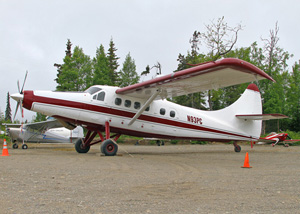
Source: Keith Burton
On July 7, 2013, a de Havilland Canada DHC-3 Turbo Otter took off with ten people on board. In the weight and balance calculations, the pilot relied on the weight of the passengers and personal items, as reported by the passengers, and by the customer for the cargo weight information. Investigators concluded the result of the accident was a takeoff that was slightly over gross weight, but quite significantly outside of the aft limit of the center of gravity envelope. This resulted in an aerodynamic stall on takeoff and loss of control of the airplane at low altitude. All nine passengers and the pilot were fatally injured.
Subsequent investigation by the FAA, NTSB, and Transport Canada found that, due to the combined effect of multiple aircraft modifications, the aft center of gravity limit that the pilot thought applied was not supported by flight test data. In addition, due to the way the flight manual supplements associated with these multiple Supplemental Type Certificates (STCs) were written, the actual location of the aft center of gravity limit was ambiguous and confusing to the pilot. An Airworthiness Directive (AD) was issued by Transport Canada and followed up with an FAA AD that corrected the aft center of gravity limit.
At issue were the interaction of a factory modification to the leading edge to add stall strips that enhanced the stall characteristics of the airplane and a later installed leading edge cuff modification that removed the same stall strips. In addition, the installation of a lighter turbine engine and the installation of additional fuel tanks far back in the fuselage made it more difficult to load the airplane within the limits.
NTSB Report: DCA13MA121
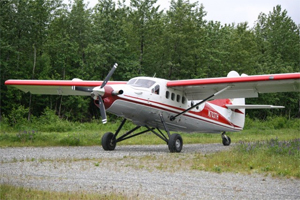
Source: David Delagarza
A Rediske Air de Havilland Canada DHC-3 Turbo Otter, operating as a Part 135 non-scheduled air taxi, was initially loaded with cargo (food and supplies) at the operator's base in Nikiski, Alaska for its first flight of the day. The cargo on this first leg was not weighed and the pilot did not document any weight and balance calculations, nor was he required to do so. The aircraft was uneventfully repositioned to Soldotna to pick up nine passengers and assorted provisions. The purpose of the flight was to transport these passengers and cargo to Bear Mountain Lodge, a wilderness lodge located 90 miles southwest of Soldotna. The weather was visual meteorological conditions.
Prior to takeoff, the pilot conducted his weight and balance calculations based on passenger-reported weights and the reported weights of the cargo provided by the wilderness lodge that hired the operator to fly to a remote location. Investigators determined that the passenger weights were somewhat in error, but the largest effect was the weight of the cargo installed in the aft baggage compartment. The pilot estimated the cargo weight at 300 pounds, based on the information the lodge provided, yet the cargo was not actually weighed. The investigators estimated the actual cargo weight was 810 pounds, based on weighing example items that were listed on purchase receipts or by using actual weights, where available. Once loaded in Soldotna, the combination of the passengers, their baggage, and the cargo weight as well as the stored locations resulted in the center of gravity for the flight being significantly aft of the limit. Investigators determined the best estimate of the takeoff center of gravity of the accident flight was at 157.8 inches. With the CG this far aft, even with full nose-down input from the pilot, he would not be able to keep the aircraft from pitching up and stalling.
Although there were no witnesses of the accident, investigators determined that the airplane impacted the ground 11 seconds after takeoff, about 2,320 feet from the threshold of the departure runway and about 154 feet right of the runway centerline. All ten occupants of the aircraft were fatally injured. A post-crash fire consumed the aircraft, cockpit, cabin area, and most all baggage and cargo. Examination of the wreckage determined there were no mechanical, structural, or control system irregularities that contributed to the accident.
Weight and Balance Considerations
To conduct a safe flight, pilots must ensure their aircraft adheres to FAA-certified weight and balance limitations. These limitations are driven by two important elements: the empty weight and center of gravity (CG) of the aircraft and the proper loading of the aircraft. Once the certified empty weight and CG of an aircraft is established, the operating weight, which includes people, baggage, cargo, and fuel, must be balanced inside to CG limits. The empty weight and CG for a particular airplane is found in the weight and balance statement, typically in the glove box of the airplane for the pilot’s use as it is required to be aboard the airplane. The envelope diagram is in the Pilots Operating Handbook or Airplane Flight Manual (AFM).
According to the FAA Weight and Balance Handbook, “most modern aircraft are so designed that, when all seats are occupied, the baggage compartment is full, and all fuel tanks are full, the aircraft is grossly overloaded.” Thus, it is up to the pilot to analyze the requirements of each flight and determine if occupancy, baggage, or fuel load must be reduced or relocated.
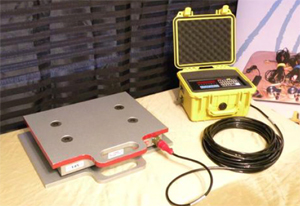
Source: FAA Weight and Balance Handbook
Weight – When built, new airplanes are weighed and empty weight information can be found in the aircraft’s Weight and Balance Statement, specific to that serial number airplane including any options. As the airplane is modified throughout its life, that statement is updated as required by the mechanics installing those modifications. If an aircraft is overloaded, a variety of performance changes may occur, such as the ability to clear obstacles on takeoff, increased takeoff runway lengths, reduced climb performance, and a higher stall speed.
Balance - The CG is a point about which an aircraft would balance if hung level from a string. Balance control is managed by keeping the aircraft’s CG inside the aircraft envelope listed in the AFM, including any applicable supplements. Aircraft weight and balance envelopes show how the airplane can be loaded for flight without becoming uncontrollable or exceeding other limitations. For example, pitch control authority is maintained if the aircraft is flown within the boundaries of these forward and aft CG limits. However, if the CG is moved aft, too close to the center of lift, the aircraft becomes unstable, making it difficult or impossible to recover if stalled. If the CG is moved forward, the downward tail load needs to be increased to maintain level flight. The pilot does this by moving the stick so that the elevator deflection on the tail increases. When the pilot runs out of available stick travel, the nose can no longer be kept up. If this happens on landing approach, the airplane cannot flare and impacts the runway.
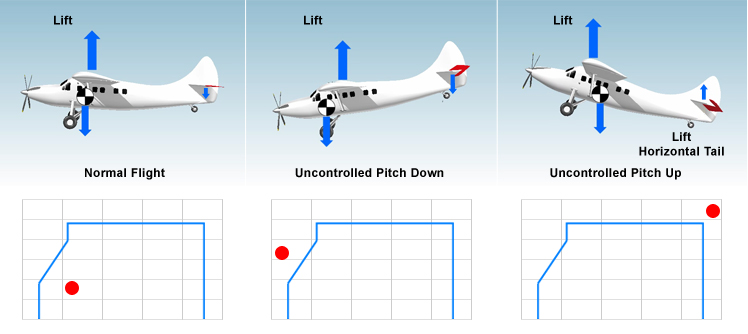
Thus, to maintain safe operations, pilots should complete a preflight planning process and review of the aircraft envelope to ensure a safe weight and balance. Additionally, pilots must consider environmental factors, such as high-density altitude, runway length, and runway conditions that may impact maximum allowable weights for a particular flight.
Basic steps to perform weight and balance calculations include:
- Determine the aircraft’s empty weight and moment (found in the airplane’s weight and balance statement)
- Determine the weight of each loaded item, including passengers, baggage, and fuel
- Calculate the moment for the load as found on the loading graph in the aircraft manual
- Total the weights and moments
- Determine if CG is within recommended limits
- Never fly an airplane outside of its weight and balance envelope
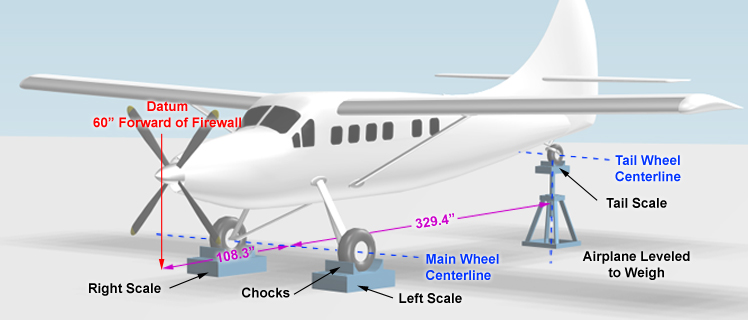
To learn more about weight and balance calculations, see the FAA’s Weight and Balance Handbook.
de Havilland Canada DHC-3 Turbo Otter
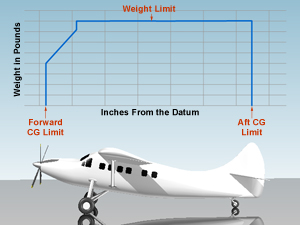
View Larger
Originally built with Pratt and Whitney radial reciprocating engines, the Otter is a single-engine, upper-wing aircraft commonly used for rugged bush operations due to its short takeoff and landing capability and the ability to operate with floats or skis. Many Otters have been modified by upgrading to a turbine engine. Other modifications commonly include changes to the wings and the addition of auxiliary fuel tanks.
The Otter weight and balance envelope is contained within the Airplane Flight Manual and is established during the airplane certification process to be an operational area providing appropriate airplane performance and flight control authority. Operation of the aircraft significantly outside of this envelope risks loss of control. Aircraft envelopes are designed with a forward and aft limit to account for varying weight and location of passengers and cargo. For example, pitch control authority is maintained if the aircraft is flown within the boundaries of these forward and aft CG limits.
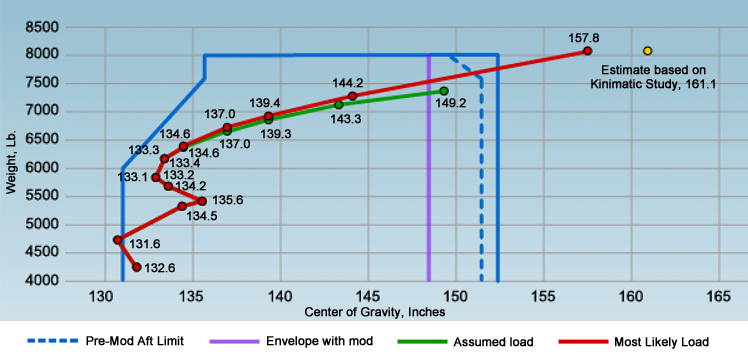
During the investigation of this accident, there appeared to be confusion among pilots regarding the appropriate aft CG limit. At 8,000 pounds, the aft center of gravity limit was originally 149.8 inches (See CG diagram). With the installation of larger stall strips on the leading edge, the aft limit was shifted back to 152.2 inches. These stall strips are attached to the leading edge of the wing. When the Stolaris stall kit is installed, the strips are removed. This kit includes a new wing leading edge with a drooped shape intended to enhance the short takeoff and landing (STOL) performance of the airplane. The flight manual supplement for this STC, in effect at the time of the accident, states to use the existing center of gravity limits, but does not specify the unmodified 149.8 inches or modified 152.2 inches limit.
Adding to the confusion was that the accident airplane was serial

number 280. All airplanes delivered after serial number 225 had the modification from the factory, but there remained a misunderstanding of whether the modification to the airplane included the shift aft of the aft limit.
Subsequent investigation by Transport Canada into the Stolaris leading edge cuff STC, as a result of the accident, determined that the aft CG limit for the Stolaris stall kit should be 148.3 inches. Canadian AD CF-2016-15 and U.S. AD 2016-10-03 were both written to pull the aft CG limit to 148.3 inches based on available flight test data.
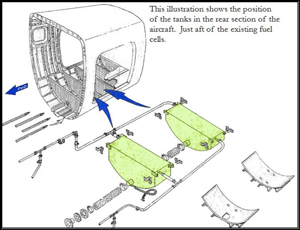
View Larger
Contributing to the aft loading were two other modifications to the basic airplane. The first was the installation of a Honeywell TPE331-12 turboprop engine that reduced the power plant weight by approximately 400 pounds, according to manufacturers published data. This weight was forward of the firewall, making the empty weight CG move aft.
The other modification was the installation of additional aft fuel tanks per another STC. The fuel tanks added 43 pounds to the empty weight of the airplane aft of the most aft fuel tank in addition to the estimated 20 gallons, or 97 pounds, of fuel minimum. The fuel load in these tanks was unknown at the time of the accident, but a flight manual supplement for the turbine engine installation required the following:
"Do not takeoff with less than 134 lbs. (20 U.S. gal.) of fuel in all three tanks."
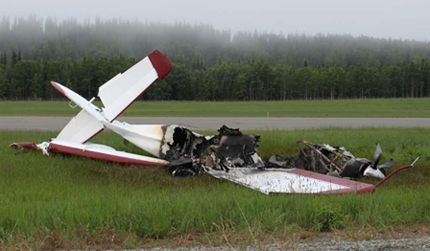
Source: NTSB
The additional fuel tanks were plumbed into the existing aft, essentially making it one larger tank with a center of gravity of 199 inches as opposed to 184. The flight manual supplement did not address how much fuel must be in this tank, possibly adding to the confusion about loading. It is unclear if the fuel tank is considered an additional tank or an increase in capacity of the aft tank. If this tank were full, it can hold 584 pounds of fuel, so this could explain why the dynamic analysis estimated the center of gravity was farther back than the loading-scenario-based center of gravity estimate.
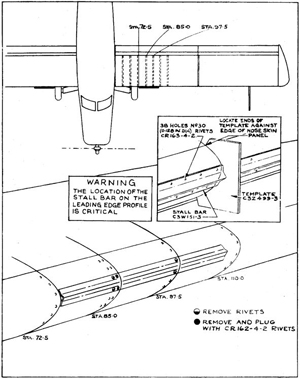
View Larger
In this auxiliary fuel tank design, the aft bulkhead of the most aft tank is at approximately fuselage station 237 inches, considerably aft of the fuselage station assumed center of gravity location of 199 in the tank flight manual supplement. Since the Otter is a tail dragger, if the tanks are not full, the fuel would tend to run to the aft tank, further aggravating an aft CG configuration. This means that while the 199 CG may be correct in level flight, it will be unconservative on takeoff and during climb.
Conclusion
After considering the affected changes in CG, based on multiple modifications of the aircraft, and specifically the changes of aft CG limit, investigators determined that the aircraft was operated grossly outside the limits of the CG envelope, making control of pitch impossible.
The National Transportation Safety Board (NTSB) determined that the probable causes of this accident were:
- The operator's failure to determine the actual cargo weight, leading to the loading and operation of the airplane outside of the weight and center of gravity limits contained in the airplane flight manual, which resulted in an aerodynamic stall.
- Contributing to the accident was the FAA's failure to require weight and balance documentation for each flight in 14 Code of Federal Regulations (CFR) Part 135 single-engine operations.
The NTSB cited the failure to require weight and balance documentation for Part 135 single-engine operations as a contributing factor to this accident. Title 14 CFR 135.63 covers what the FAA requires for weight and balance documentation. It should be noted that 14 CFR 135.63(c) only applies to multiengine operations, single-engine operations are exempted from this requirement.
§135.63(c) Recordkeeping requirements
(c) For multiengine aircraft, each certificate holder is responsible for the preparation and accuracy of a load manifest in duplicate containing information concerning the loading of the aircraft. The manifest is prepared before each takeoff and must include:
-
The number of passengers;
-
The total weight of the loaded aircraft;
-
The maximum allowable takeoff weight for that flight;
-
The center of gravity limits;
-
The center of gravity of the loaded aircraft, except that the actual center of gravity need not be computed if the aircraft is loaded according to a loading schedule or other approved method that ensures that the center of gravity of the loaded aircraft is within approved limits. In those cases, an entry shall be made on the manifest indicating that the center of gravity is within limits according to a loading schedule or other approved method;
-
The registration number of the aircraft or flight number;
-
The origin and destination; and
-
Identification of crew members and their crew position assignments.
Alaska charter flight operations have unique challenges due to environmental conditions of the region; diversity in service requests; and the varying mix of passengers, their schedules, and types of cargo transported. The determination of proper weight and balance for each flight can often be overlooked as there is persistent pressure to accommodate expediency, timeline, and customer requirements.
- Improper weight and balance calculations - The pilot did not calculate the appropriate weight and balance of the aircraft. Additionally, the pilot relied on cargo weights that were reported by the customer as well as passenger weights provided by each occupant, instead of actual weights
- Unclear CG location - Confusion existed among industry about the actual aft center of gravity limits in the flight manual and flight manual supplements for multiple aircraft modifications, many of which had been implemented and later changed on the accident aircraft
Pilots ensure that reported passenger and cargo weights are accurate and that the center of gravity is within limits.
- The pilot in this accident utilized inaccurate passenger weights as well as underestimated cargo weights. Additionally, the pilot was unable to determine the accurate aft center of gravity limit due to multiple, potentially conflicting STCs.
Installers of multiple FAA-issued STCs must determine that there is a satisfactory interrelationship with other incorporated STCs.
- Since the operator did not fully understand the interrelationship of the STCs, they were unable to provide clear center of gravity information to its pilots. As a result, the pilots had difficulty determining the correct aft CG limit.
According to NTSB Safety Alert number 072, between 2008 and 2016, 136 general aviation accidents were related to pilots improperly conducting preflight calculations for weight and balance or not doing them at all. Additionally, according to a 2009 study conducted by the FAA Flight Standards Service, Alaska Region, operations outside of the aircrafts' weight and balance envelope accounted for approximately 4% of the fatal and serious injury accident causes in Alaska. Due to the difficulty of reconstructing an aircraft's weight and balance, these statistics may be underreported.
All the accidents cited in the FAA Alaska region study resulted in loss of control of the aircraft, usually an aerodynamic stall followed by entry into a spin. Because most of these accidents occur at low altitude or on takeoff, there is insufficient altitude to recover the airplane if it were possible at that center of gravity location.
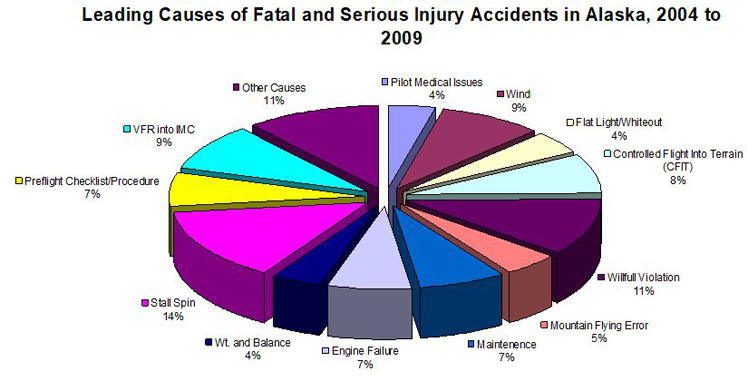
Source: FAA Flight Standards Service, Alaska Region
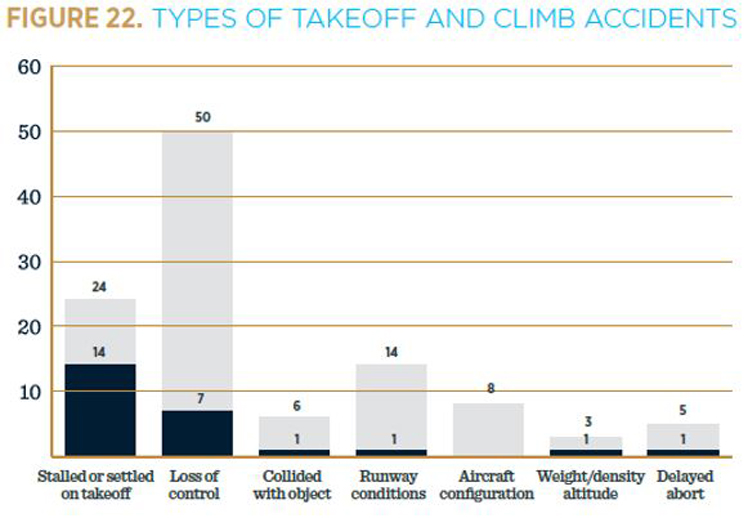
Source: 26th Annual Nall Report
In part due to this accident, the NTSB created a pilot training video below:
The NTSB also created a brochure on the same topic: "Minding Weight, Maintaining Balance," that emphasizes the criticality of staying within the weight and balance envelope and using accurate data.
In addition, the Anchorage Aircraft Certification office discussed this accident with operators of DHC-3 Otters in Alaska at the Beaver/Otter Working Group meetings, and presentations have been given to Otter operators in Western Alaska.
Canadian AD CF-2016-15 and its U. S. equivalent AD 2016-10-03 were issued as a result of the investigation into this accident. Both restricted the aft center of gravity limit for the airplane when operated as a land plane to what was tested as part of the Stolaris STC for the leading-edge modifications.
Airplane Life Cycle
- Operational
- Maintenance / Repair / Alteration
Accident Threat Categories
- Loss of Control
Operations
- Business/Commercial
Accident Common Themes
- Organizational Lapses
- Human Error
- Flawed Assumptions
Organizational Lapses
Rediske Air relied on data supplied to them by their customer for the weights of the passengers and cargo. As an organization, they did not commonly use a loading manifest and did not actually weigh the cargo given to them for transportation. In addition, Rediske Air did not keep a record of the actual loading. In this case, the pilot was also an owner of the business.
Human Error
The pilot in command relied on inaccurate data for the determination of weights of the cargo for the accident flight. The investigators determined that the weights were incorrect. On the day of the flight, the pilot was involved in the loading of the aircraft, but he did not realize that both the passenger weights were reported low as well as the cargo weights, which were 300 pounds over what had been assumed.
Flawed Assumptions
The flawed assumption in this case was that the weights reported to the airline by the lodge were accurate.
Below are several notable accidents that have occurred where the aircraft was operated outside of its weight and balance envelope. The NTSB, in a related safety information bulletin, noted that between 2008 and 2016 at least 136 general aviation accidents were related to pilots improperly conducting preflight calculations for weight and balance or not doing them at all.
ANC15FA071: An airline transport pilot was conducting a flight from a fishing lodge to a remote fishing location in a float-equipped de Havilland DHC-3T (Otter) airplane, which impacted tundra-covered terrain just after takeoff from a lake. Three passengers were killed, the pilot and four passengers sustained serious injuries and two passengers sustained minor injuries. According to a witness, after liftoff the airplane began to climb and then descended. The floats struck the water then the airplane briefly became airborne again before crashing.
The pilot reported that, before departure, the front and center fuel tanks were filled and that the aft fuel tank had "residual" fuel. He said that he "guesstimated" the airplane's weight and balance before departure (he did not weigh the cargo, obtain passenger weights, or document any weight and balance calculations). A post-accident weight and balance study using the passenger weights, cargo weights, and fuel load showed that the airplane exceeded its maximum gross weight by about 509 pounds and that the CG was 4.08 inches aft of the aft CG limit. The pilot's failure to determine the airplane's actual preflight weight and CG led to the airplane being operated outside of its weight and CG limits, preventing it from attaining a proper airspeed and ultimately resulting in an aerodynamic stall.

ANC05FA116: A Cessna 180 took off approximately 287 pounds over gross weight. The airplane impacted terrain, but it was not possible to determine if it was the result of a loss of control or some other unknown reason. The NTSB in their report stated: "The airplane was loaded with six five-gallon (plastic) fuel containers of diesel fuel, a 150-pound iron stove, the mechanic's tools, several bags of groceries, and a large cooler/ice chest. The...passenger felt uncomfortable because, '[the pilot] would never put a seat in for him.' He would routinely be required to sit on a plastic bucket or a small ice chest during the flight to the remote lodge. The estimated gross weight of the airplane at the time of the accident was approximately 2,837 pounds, or about 287 pounds over the allowable gross weight."
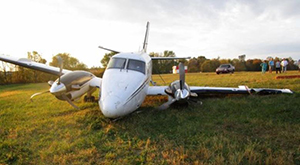
Source: NTSB
CEN17LA029: A Beech 100 ran off the departure end of the runway during takeoff, substantially damaging the airplane. The airline transport pilot, copilot, and eight passengers were not injured. During the takeoff roll, the airplane did not accelerate as quickly as the pilot expected. When the airplane reached the last third of the runway, the pilot pulled back on the control yoke to lift the airplane off the runway, but the stall warning horn sounded. He lowered the nose, but the airplane subsequently departed the runway and impacted terrain and obstacles. The pilot reported that he knew that the total weight of the eight passengers, their bags, and the fuel caused the airplane to be overweight, but he did not complete a weight and balance form or determine the expected takeoff performance before the flight. After the accident, the pilot determined that the airplane was 623 pounds over its maximum gross weight. The pilot's decision to depart knowing that the airplane was over its maximum gross takeoff weight was unsafe. Coupling that decision with the pilot's failure to determine the expected takeoff performance resulted in the airplane not accelerating as expected and its subsequent runway excursion.
ANC08FA087: As an experimental amateur-built aircraft, the Glasstar, does not have a certificated maximum gross weight or center of gravity limit set by the kit manufacturer. However, the company recommended that the maximum gross weight should be 2100 pounds. The aircraft would normally be a two-person aircraft; however, this airplane was equipped with an additional seat in the baggage compartment. Three people were on board and all three were fatally injured.
This airplane was also equipped with retractable landing gear amphibious floats which raised the empty weight to about 1500 pounds. The NTSB estimated that the airplane was at least 10 pounds over gross weight without any allowance for fuel. The NTSB determined that the airplane entered an aerodynamic stall. The airplane was loaded outside its weight and balance envelope which was considered a contributing factor.
ANC04FA102: A Piper PA-12 was loaded 167 pounds over gross weight. The center of gravity was not possible to determine conclusively, but there were two adult men on board, camping gear, three five-gallon containers of fuel, rifles, and ammunition in the baggage compartment. According to the NTSB, the airplane stalled and entered an uncontrolled descent. It impacted terrain and a post-crash fire ensued. Both occupants were killed. It was not possible to determine an accurate center of gravity due the effects of the post-crash fire, but given the probable location of the baggage, it was likely out of the aft limit.
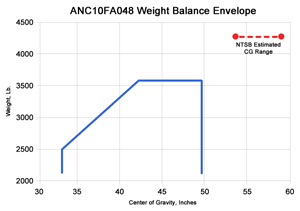
View Larger
ANC10FA048: A Cessna 206 took off on a warm day close to sea level, exceeding gross weight by 658 pounds and aft of the aft center of gravity limit. The result was the failure to climb after takeoff and entering an aerodynamic stall. The aircraft was carrying construction supplies and other cargo and had a cargo pod installed under the belly.
GAA17CA347: A flight instructor and student pilot were conducting an instructional flight in an Aeronca 11AC airplane when it impacted trees at the departure end of the runway, resulting in minor injuries to the student. The flight instructor reported that, during the takeoff climb from a grass runway, the "climb rate became stagnant." He added that he instructed the student to "lower the nose slightly," but the airplane still could not establish a "normal climb rate." After taking over the flight controls, the flight instructor turned the airplane toward a small gap in the tree line ahead, and the airplane subsequently impacted the trees. According to the flight instructor, the airplane departed "loaded at gross weight." The student reported that the flight instructor did not discuss the airplane's weight and balance with him before the flight. Post-accident weight and balance calculations revealed that the airplane was 139 pounds over its maximum gross weight, and the calculated density altitude was about 2,648 feet. The airplane's overweight condition, in combination with the takeoff in high density altitude conditions from a turf runway, decreased the airplane's takeoff performance and resulted in the accident.
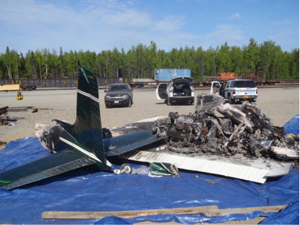
Source: NTSB
ANC11FA037: The Cessna 180 has four seats from the manufacturer. This airplane took off with five people on board, two in the front seats and three seated in the two-person rear bench seat. In addition, the baggage compartment behind the rear seat contained a chain saw, a pistol, pots, kitchen utensils, rope, bundled electrical wire, and personal clothing and bags. The airplane's estimated gross weight at the time of the accident was about 243 pounds over its approved maximum takeoff weight. Given the witness accounts of the airplane swerving off the runway during the takeoff roll, and of its subsequent nose-high attitude and rapid roll prior to impact, it is likely that the pilot lost control during the takeoff roll and then applied excessive nose-up pitch to become airborne. Once airborne, he failed to attain sufficient airspeed to avoid an aerodynamic stall, and the airplane descended out of control to the ground. All five people on board were fatally injured.
The NTSB found the probable cause to be the pilot's loss of control of the airplane during takeoff, which resulted in an aerodynamic stall. Contributing to the accident was the pilot's lack of experience in make and model, his lack of currency in FAA-required takeoffs and landings, and his excessive loading of the airplane. The center of gravity could not be determined because of the post-crash fire and shifting of the cargo as a result of the ground impact. The pilot's weight and balance calculations were listed as an issue in the findings of the report.
ANC13FA091: A Piper PA-18 Super Cub attempted to takeoff on a rural runway with a tail wind. The airplane was overloaded with two people, full fuel, hunting and camping gear, and two caribou. Gross weight at the time of the accident was conservatively estimated to be 2,392 pounds, 642 pounds over maximum takeoff weight. The estimated center of gravity at the time of the accident was positive 25.07 inches. The center of gravity range at 1,750 pounds (maximum gross weight) is positive 14.0 inches to positive 20.0 inches. The NTSB determined that the probable cause was the pilot's improper decision to load the airplane beyond its allowable takeoff weight and center of gravity limits, which resulted in a loss of control during the initial climb. Contributing to the accident was the external load and the downwind takeoff.

Photo of ANC13FA091 wreckage (left) and diagram of weight balance envelope (right) - View Larger
FTW91FA080: A Beech Bonanza lost control in instrument flight rules conditions in Manor, Texas in April 1991 due to being loaded over gross weight and aft of the aft center of gravity limit. As a result of the aft center of gravity, the aircraft maneuvering stability and stick force per g characteristics would have been seriously degraded according to the NTSB report. In this case the airplane was only 29 pounds over the maximum gross weight limit but was between 3.3 and 5.3 inches aft of the aft center of gravity limit. The result was an in-flight breakup with four fatalities.
Technical Related Lessons
Safety of flight is achieved through accurate determination of weight and its proper distribution within the aircraft, so that the pilot can confirm the airplane is within the weight and balance envelope. (Threat Category: Loss of Control)
- Investigators determined that the pilot incorrectly estimated the total take-off weight of the aircraft by under-accounting for the weight of baggage and supplies in the cargo area; relying upon inaccurate passenger-provided body weight; and ignoring the addition of customer-purchased provisions. These compounded underestimations resulted in a total cargo and passenger weight that was almost two and a half times more than the pilot determined.
- The loading of the aircraft also moved the center of gravity significantly aft of the aft CG limit, putting the aircraft out of balance and uncontrollable in pitch.
Common Theme Related Lessons
Installers of multiple FAA-issued STCs must determine a satisfactory inter-relationship with other installed STCs. (Common Theme: Organizational Lapse)
- Multiple STCs were installed on the accident airplane that related to turbine engine conversion, several wing modifications, and a fuel system modification. Due to the inter-relationship among these STCs, each one of these modifications potentially affected the aft center of gravity limit. Since the supplements were ambiguous in defining the actual aft center of gravity, it was difficult, even for investigators, to determine the actual aft limit. In cases where numerous STCs are installed, it is the responsibility of the installer to establish the satisfactory STC interrelationships.
